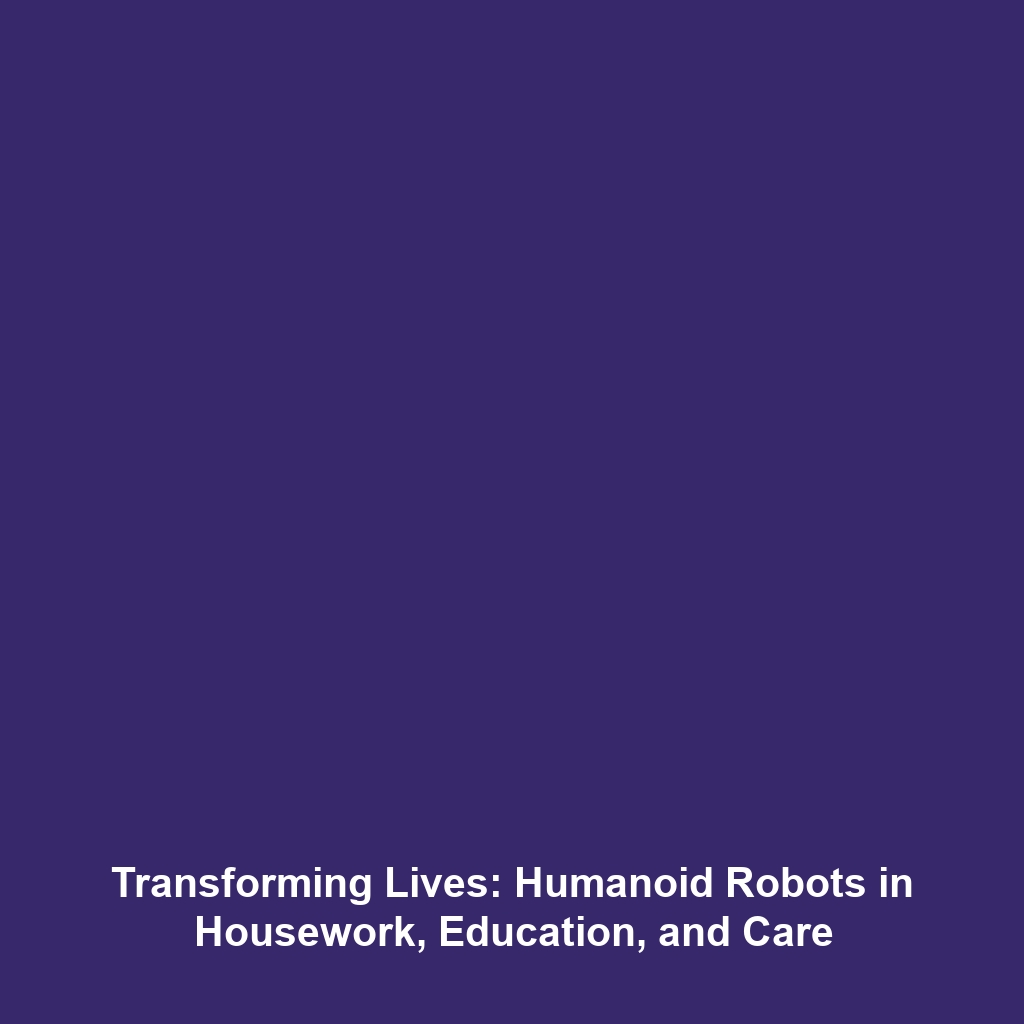The Potential for Humanoid Robots to Assist with Household Tasks, Education, and Caregiving
Humanoid robots are rapidly evolving and holding promising potential across various sectors, notably in assisting with household tasks, education, and caregiving. As technology advances, these robots could revolutionize our daily lives, providing invaluable support in managing everyday activities. Understanding the significance of humanoid robots within this context highlights their transformative role in enhancing efficiency, productivity, and care in the home and community.
Key Concepts of Humanoid Robotics
Humanoid robots are designed to mimic human appearance and behavior, equipped with advanced artificial intelligence and robotics technologies. Here are the major concepts surrounding their potential:
- Robotic Dexterity: Humanoid robots are able to perform complex physical tasks often found in household environments, such as cooking and cleaning.
- AI and Learning Ability: These robots are programmed with machine learning algorithms that enable them to learn from their interactions and improve their assistance.
- Social Interaction: The design and functionality of humanoid robots allow them to engage with humans socially, which is crucial in educational and caregiving settings.
Applications and Real-World Uses
The applications of humanoid robots are becoming more prevalent as technology progresses. They are being utilized in various capacities, including:
- Household Tasks: Robots like Samsung’s Bot Handy are designed to assist with cleaning, dishwashing, and laundry.
- Education: Robots such as NAO and Robotis are being integrated into classrooms to assist in teaching and engaging students in interactive learning.
- Caregiving: Humanoid robots like Pepper are being utilized in healthcare settings to provide companionship and support to elderly individuals.
Current Challenges
Despite the considerable promise of humanoid robots, there are significant challenges that must be addressed:
- Technical Limitations: Current humanoid robots often struggle with complex, unpredictable environments in household settings.
- Cost Factors: High development and production costs limit widespread adoption of humanoid robots.
- Ethical Concerns: Issues such as privacy invasion and job displacement raise important ethical questions regarding the integration of robots into daily life.
Future Research and Innovations
The future of humanoid robots is bright, with numerous innovations on the horizon:
- Advanced AI Integration: Future humanoid robots are expected to employ more sophisticated AI systems, enabling better decision-making and interaction.
- Enhanced Robotics: Research into improving dexterity and mobility will lead to robots that can navigate homes and perform tasks more efficiently.
- Collaboration with Humans: Upcoming generations of humanoid robots will likely focus on collaboration models, allowing seamless teamwork between humans and robots in various settings.
Conclusion
The potential of humanoid robots to assist with household tasks, education, and caregiving signifies a pivotal development in robotics technology. As they evolve, these robots promise to provide much-needed support in everyday life, enhancing convenience and quality of care. Moving forward, it is essential to address the challenges associated with their deployment to fully realize their benefits. For individuals interested in the realm of robotics, staying informed on recent advancements is crucial. To explore more about the advancements in robotics technology, visit our related articles section.




